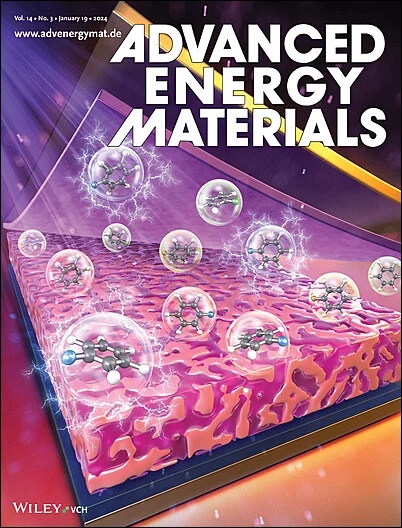The Role and Mechanism of Separators in Aqueous Zinc Metal Batteries: a Critical Review
IF 26
1区 材料科学
Q1 CHEMISTRY, PHYSICAL
引用次数: 0
Abstract
Aqueous zinc metal batteries (AZMBs) have gained increasing attention in recent years as a promising energy storage system due to their high specific capacity, low cost, and eco‐friendliness. However, dendrite growth and side reactions of zinc anodes severely hinder their reversibility and sustainability. The separator, an indispensable component of battery devices, increasingly influences the overall performance of AZMBs, although research into separators for AZMBs is still in its infancy. Despite years of exploration and development, a clear and systematic understanding of the underlying mechanisms of various separators is still lacking in the field. Herein, this article reviews the research advances and development status of separator modification strategies for AZMBs, with a focus on their key roles and mechanisms. In principle, these mechanisms encompass electric field distribution, ion sieve effect, crystal orientation, and desolvation effect. The unique advantages and limitations of each mechanism in regulating zinc deposition are comprehensively discussed. Notably, this review also provides an analysis of the effectiveness evaluation of separators in AZMBs. Finally, the critical challenges and future trends of separator modification for AZMBs are discussed, with the aim of inspiring the development of high‐performance separators and advancing the progress of AZMBs.水锌金属电池中隔膜的作用和机理综述
锌金属水溶液电池(azmb)由于具有高比容量、低成本和环保等优点,近年来受到越来越多的关注。然而,锌阳极的枝晶生长和副反应严重阻碍了其可逆性和可持续性。隔膜作为电池器件不可缺少的组成部分,对azmb的整体性能影响越来越大,尽管对azmb隔膜的研究仍处于起步阶段。尽管经过多年的探索和发展,但对各种分离器的作用机理仍缺乏清晰、系统的认识。本文综述了azmb分离器改性策略的研究进展和发展现状,重点介绍了azmb分离器改性策略的关键作用和机理。原则上,这些机制包括电场分布、离子筛效应、晶体取向和脱溶效应。全面讨论了各种调节锌沉积机制的独特优势和局限性。值得注意的是,本文还对azmb中分离剂的有效性评价进行了分析。最后,讨论了AZMBs分离器改造的关键挑战和未来趋势,旨在启发高性能分离器的开发,推动AZMBs的发展。
本文章由计算机程序翻译,如有差异,请以英文原文为准。
求助全文
约1分钟内获得全文
求助全文
来源期刊

Advanced Energy Materials
CHEMISTRY, PHYSICAL-ENERGY & FUELS
CiteScore
41.90
自引率
4.00%
发文量
889
审稿时长
1.4 months
期刊介绍:
Established in 2011, Advanced Energy Materials is an international, interdisciplinary, English-language journal that focuses on materials used in energy harvesting, conversion, and storage. It is regarded as a top-quality journal alongside Advanced Materials, Advanced Functional Materials, and Small.
With a 2022 Impact Factor of 27.8, Advanced Energy Materials is considered a prime source for the best energy-related research. The journal covers a wide range of topics in energy-related research, including organic and inorganic photovoltaics, batteries and supercapacitors, fuel cells, hydrogen generation and storage, thermoelectrics, water splitting and photocatalysis, solar fuels and thermosolar power, magnetocalorics, and piezoelectronics.
The readership of Advanced Energy Materials includes materials scientists, chemists, physicists, and engineers in both academia and industry. The journal is indexed in various databases and collections, such as Advanced Technologies & Aerospace Database, FIZ Karlsruhe, INSPEC (IET), Science Citation Index Expanded, Technology Collection, and Web of Science, among others.
 求助内容:
求助内容: 应助结果提醒方式:
应助结果提醒方式:


